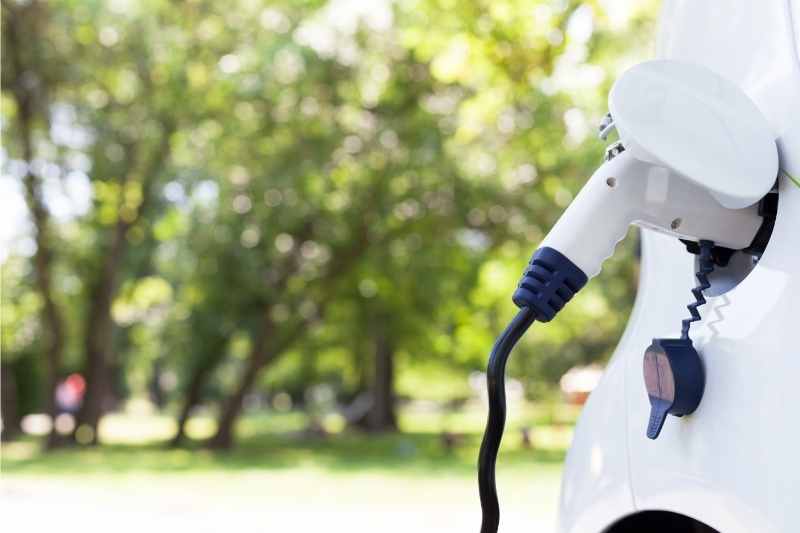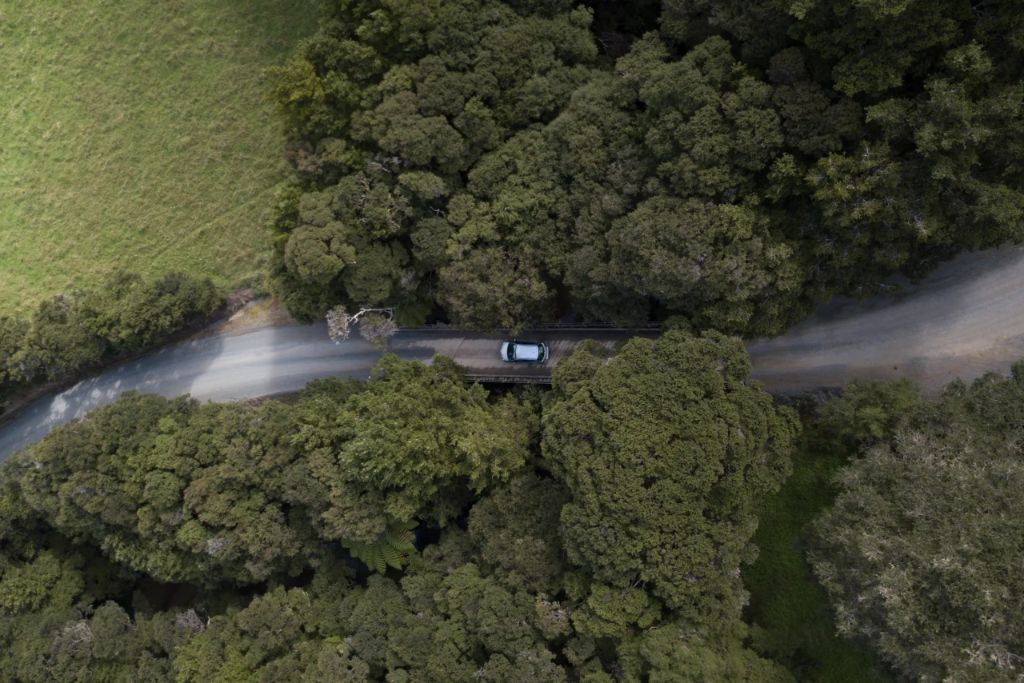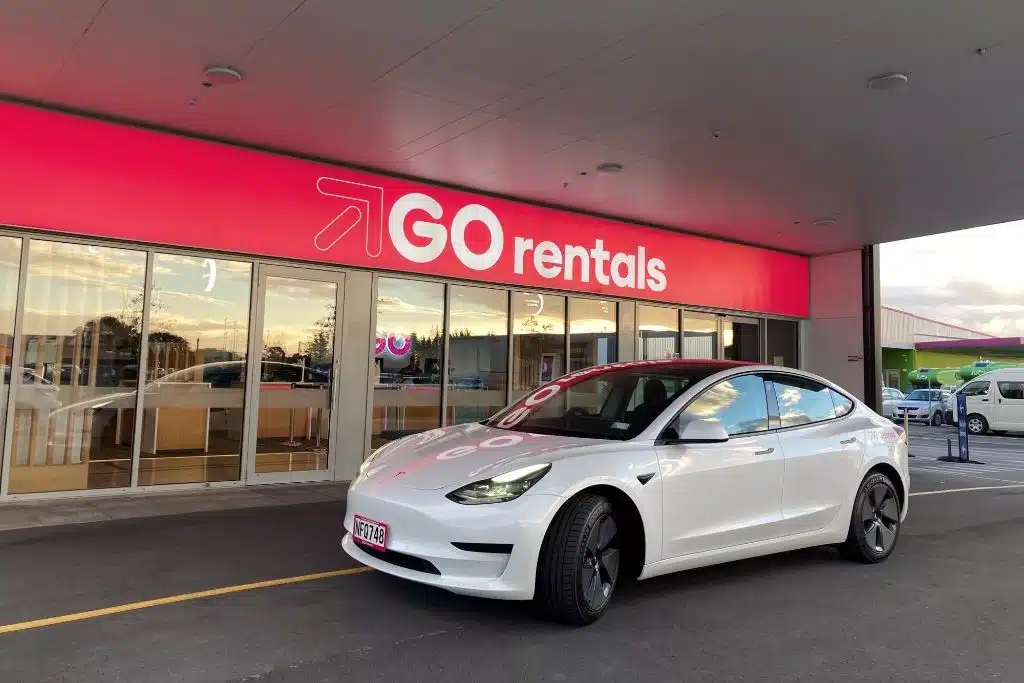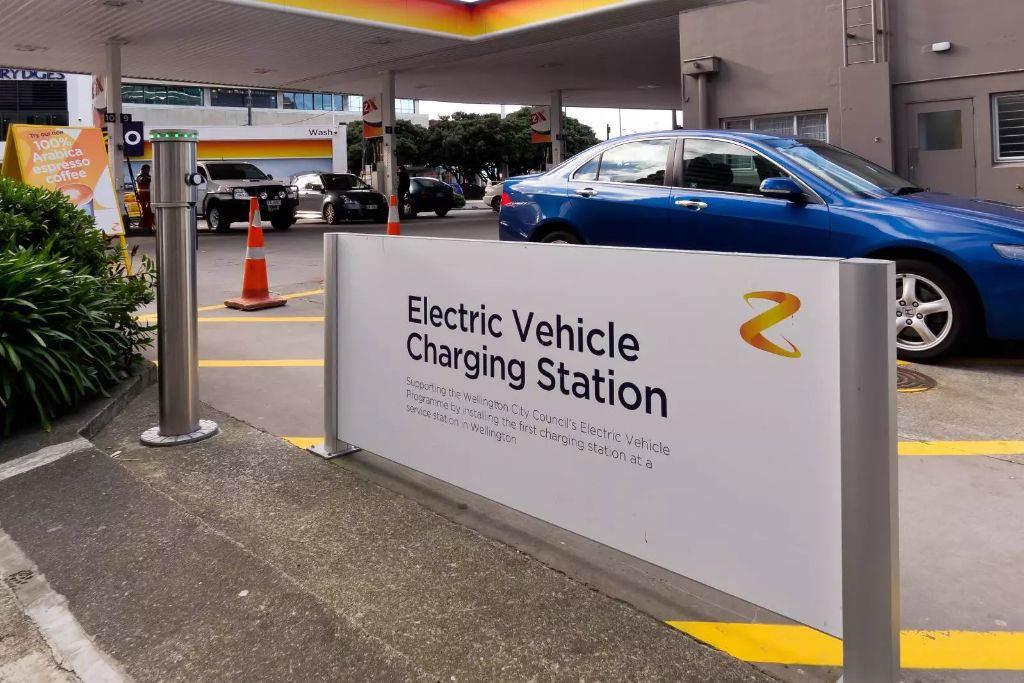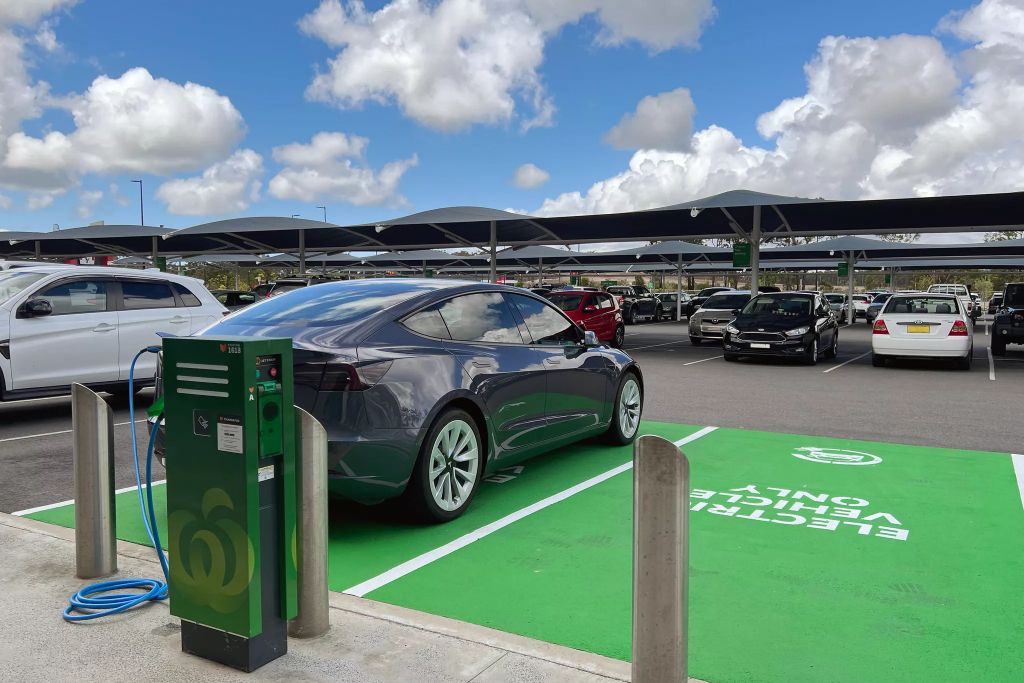In New Zealand, the Climate Change Commission has recommended phasing out imports of fossil-fuelled cars by no later than 2035. At GO Rentals, we are committed to this electric future and have already taken steps towards an environmentally sustainable fleet.
Not only are we a three times carbon-neutral business, but we have an awesome Tesla fleet, including the Model 3 and Y electric cars. With an option for customers to offset their carbon emissions on any vehicle rental; we want to invite our customers on our climate action journey.
But just how green are electric vehicles? In this article, we will cover:
- 9 benefits of electric vehicles
- How to charge an electric vehicle in New Zealand
- New Zealand’s Electricity and our emission targets
- How you can rent a Tesla today
9 Electric Vehicle Benefits
1. Energy security
Electric vehicles provide energy security to New Zealand in numerous ways:
- They reduce the high dependency on imported oil. Therefore, New Zealand can be less vulnerable to price fluctuations and disruptions in oil supply in the international markets.
- EVs can be charged during off peak hours when demand is lower, allowing for more adaptability with the grid.
- Electric cars can utilise various energy sources for charging, including renewable energy sources such as solar and wind power. This flexibility future-proofs EVs, as they can adapt to various forms of energy production as New Zealand moves into a more sustainable future.
- Electric cars have an incredible vehicle-to-grid (V2G) technology. It can distribute its energy resource and provide power back to the grid, making it very efficient.
Overall, electric vehicles can help balance the grid so we have more energy security in the long-term. Through this, we can rely on a more resilient and sustainable energy grid.
2. Electric vehicles are energy-efficient
Electric vehicles can convert over 77% of electric energy from the grid to power the wheels. Whereas fuel powered cars only convert around 12-30% of the energy stored to power the wheels, the rest of the energy is lost to the engine, driveline and accessories. Consequently, electric motors use less energy to get you from A to B.
Furthermore, electric cars have a regenerative braking system. When using the brakes, the electric motor acts as a generator and converts the kinetic energy into electrical energy that is then restored in the battery for future use. With this technology, it is able to reuse energy that is normally lost in standard cars.
3. Electric vehicles reduce emissions
As they have no exhaust pipe, electric cars do not emit carbon dioxide emissions when driving. Whereas petrol and diesel vehicles emit greenhouse gas emissions into the air with every single drive. According to My Climate, just one electric car on the road can save an average of 1.5 million grams of CO2 emissions in one year.
In a study conducted by The International Council on Clean Transportation, they found that “a typical electric car today produces just half of the greenhouse gas emissions of an average European passenger car.” … “Furthermore, an electric car using average European electricity is almost 30% cleaner over its life cycle compared to even the most efficient internal combustion engine vehicle on the market today.”
That being said, there are some concerns over the higher emissions emitted during the manufacturing of electric car batteries. The ICCT study found that these emissions are paid off after only 2 years compared to an average conventional car. If the electric car is charged using renewable energy sources, the timeline drops to about one and a half years.
4. Reduced maintenance costs
Electric vehicles have less chance for wear and tear as they have fewer moving parts than petrol and diesel vehicles. For example, EVs do not have oil filters, spark plugs or drive belts that need to be maintained and replaced periodically. Furthermore, due to the regenerative braking system, electric cars do not need to replace the braking pads as often as petrol powered cars.
Having said that, the battery packs on EVs do need regular maintenance checks to ensure they are running smoothly. However, when compared to standard cars, this maintenance is minimal and the battery life is designed to last for many years.
5. Cheaper running costs
Overall, the cost of electricity is generally lower than the cost of petrol and diesel. Prices for electricity, on the whole, tend to be a lot more stable than fuel. The petrol and diesel market fluctuates frequently and turns out to be more expensive when compared to electricity. When you pair this with the energy efficiency of electric vehicles, it takes a lot less money for electric car drivers to travel the same distance as it would for standard cars.
6. Smooth driving
Electric vehicles, especially the Tesla models, are known for being incredibly smooth to drive. One of the main reasons for this is the ability to accelerate quickly. With no transmission or internal combustion engine, most electric cars can eliminate any jerks or delays in acceleration that are sometimes experienced in standard cars.
Additionally, EVs have a very low centre of gravity, allowing them to hug the road. Drivers often find electric cars easier to handle and experience an effortless drive. Our Tesla Model 3, in particular, makes you feel like you are driving a sleek sports car with an acceleration speed of 0 to 100km/h in 6.1 seconds.
7. Reduced noise pollution
Some internal combustion engines in standard cars require an exhaust pipe muffler to reduce the noise it makes. As electric vehicles do not have a transmission or combustion engine, they make considerably less sound. In fact, they are so quiet that the EU has introduced regulations that electric cars must emit warning sounds for pedestrians when moving at less than 18.6mph.
8. Convenient charging stations
On both the North and South Islands in New Zealand, there are thousands of public charging stations. Along the major highways, you can find an electric vehicle charging station every 156km. The most convenient charging stations are found at various:
- Car parks
- Shopping malls
- Hotels
- Campgrounds
- Tourist attractions, and
- Beaches
You are not limited to only petrol stations like you are in a conventional car. However, many petrol stations have also installed EV charging stations and BP has a goal to implement 100,000 stations globally. The other added benefit is that you can plug into a standard domestic powerpoint to charge overnight (using an adapter for Tesla). Although, you should note that it will take you longer to reach the full charge.
9. Health benefits
The major benefit of electric vehicles is the contribution they can make to improving the air quality in towns and cities. A study by the Harvard School of Public Health concluded that the increase in EVs could significantly reduce air pollution-related deaths and illnesses. This is one of the reasons so many cities around the world have committed to going electric including Los Angeles, New York, and London.
How do you charge an electric vehicle?
An electric car can be charged at both household power points and public charging stations. The driver can plug the supply cable into the charging outlet socket first, then connect it to the electric vehicle inlet. Once the communication between the charging station and the car has been established, it will start charging. With some EVs, access may need to be activated before it will recognise the charging station.
There are two types of power that can be used to charge electric cars; alternating current (AC) and direct current (DC). An EV treats AC and DC differently. The power supplied from the grid is always AC, but a battery needs to store it as DC. Just like most electric devices with a battery, an electric car will have an AC-to-DC converter built-in.
AC charging for electric vehicles
The converter is built into the electric vehicle and is referred to as an “onboard charger”. It will take the AC power from the grid and charging stations and turn it into DC power to store in the battery. The majority of EVs have an AC charger.
DC charging for electric vehicles
The only difference with a DC charger is the location for AC to be converted to DC. With a DC charging station, the converter is built into the charger itself, allowing the power to be fed directly into the car battery. DC chargers are bigger and can power a vehicle faster. They are usually only found near major highways or petrol stations to assist when drivers need to charge quickly.
How will New Zealand cope with the increase in Electric Vehicles?
The EECA estimated that even if all of New Zealand’s light vehicles were electric, this would only increase the total electricity demand by 20%. Fortunately, we can accommodate for this within our current electricity grid, providing the majority of electric vehicles are charged during off-peak periods.
Most owners currently charge their EVs at home overnight and this is not expected to change, even with the growth in EV owners. The government also has a range of programmes underway to ensure the electricity network can support the uptake of EVs.
New Zealand Emission Reduction Targets
In New Zealand, the Climate Change Commission has recommended phasing out imports of fossil-fueled cars by no later than 2035.
According to the Energy Efficiency & Conservation Authority in New Zealand:
“By the end of this decade, more than 50% of monthly vehicle sales in New Zealand need to be electric in order to meet our emissions reduction targets. This requires a jump from about 6000 electric vehicles (bought in 2020) to annual sales of 150,000 electric vehicles (NZTA).”
Join GO Rentals’ climate action: Hire a Tesla today!
The best way to experience a smooth and thrilling electric car drive is by hiring a rental. We’re proud to have both the Tesla Model 3 and Tesla Y Models available to rent from our major city car rental locations like Auckland , Christchurch, Wellington, and Queenstown.
Experience fast acceleration, slick handling and a luxury interior with our Tesla range. You can try out the convenient public charging stations and see first-hand how easy it is to make the switch for a greener and more sustainable future.
Book a vehicle for this trip
We recommend:
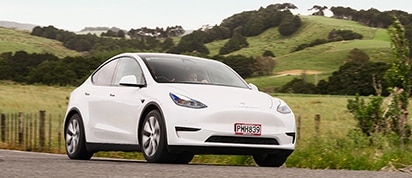
Premium EV SUV
Tesla Model Y
- Seats
- 5 seats
- Large Bags
- 3
- Small Bags
- 2
- Transmission
- Auto trans
